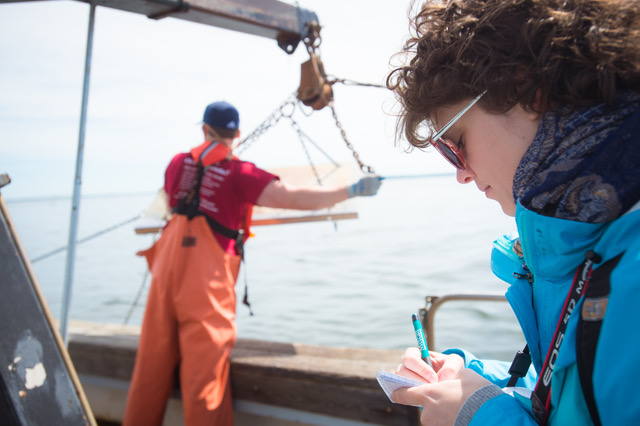14 January 2019
The Science of Our Stories, Part II: Moving the Needle on Effective Science Communication
Posted by Shane Hanlon
By Sunshine Menezes
Young scientists-in-training face a variety of communication challenges, from writing their first lab report to drafting their first proposal, perhaps culminating in their dissertation. All along this part of the career spectrum, students are taught—too often implicitly—what “good” scientific communication looks like. Unfortunately, most corners of academia still emphasize a narrow definition of science communication that focuses on communication with scientific peers. This leaves early career scientists with little or no experience interacting with non-expert, public audiences about science.
I was once one of these young scientists, filled with scientific knowledge but poorly prepared to share it in compelling and relevant ways. My experience working on national environmental policy as a National Sea Grant Dean John Knauss Marine Policy Fellow made my own communication deficiencies painfully obvious, but also helped me overcome them. I’ll never forget the first time I drafted a statement for my boss in the Knauss Fellowship: the press secretary looked at me, dumbfounded, wondering aloud how anyone was going to understand what I had written.

Metcalf Institute training brings journalists into the field to experience scientific methods first-hand.
In the sixteen years that followed, I’ve forged a different career path that has not only built my own communication skills, but allowed me to help foster informed public conversations about science through my work with the University of Rhode Island’s Metcalf Institute. Metcalf Institute steps in to this breach by offering communication training for scientists and science training for professional journalists. We have found that these two aspects of science communication training are equally important. Journalists and scientists apply their new skills and insights in their reporting and engagement efforts, giving millions of news consumers access to accurate and contextualized science news coverage. Importantly, the interactions between scientists and journalists in our programs leave lasting impressions, broadening the horizons of each profession and facilitating public engagement on the science topics that affect our health, livelihoods, and environment.
Our collaboration with Hollie Smith (see previous post) has helped quantify the positive impacts of Metcalf training (Smith et al., 2018). Thankfully, science communication training opportunities are becoming more widely available. Journalists, however, now have fewer opportunities for science training, even as reporters need to cover science-based stories more and more frequently. Metcalf Institute will keep providing these important professional development opportunities for both journalists and scientists to strengthen each group’s communication efforts toward the goal of achieving truly inclusive public engagement with science.
-Sunshine Menezes is the Executive Director of the Metcalf Institute for Marine & Environmental Reporting and a Clinical Associate Professor of Environmental Communication at the University of Rhode Island.










 The Plainspoken Scientist is the science communication blog of AGU’s Sharing Science program. With this blog, we wish to showcase creative and effective science communication via multiple mediums and modes.
The Plainspoken Scientist is the science communication blog of AGU’s Sharing Science program. With this blog, we wish to showcase creative and effective science communication via multiple mediums and modes.